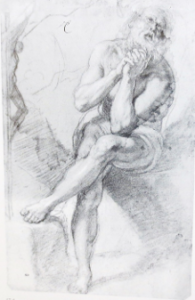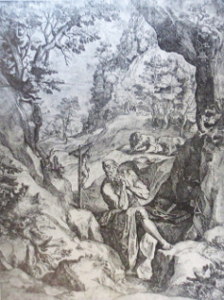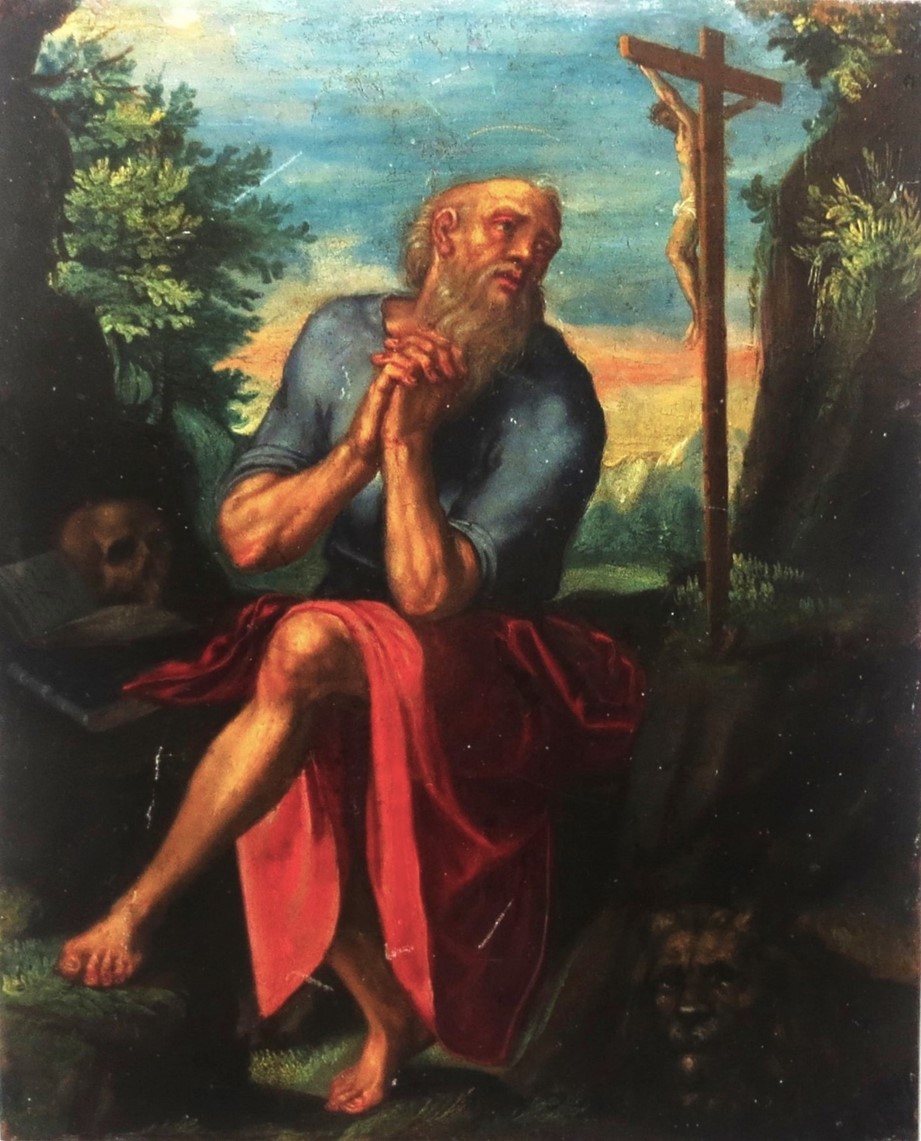Seemingly autograph variant reduction by Muziano of his large version in the Pinacoteca Nazionale, Bologna, painted 1570-1572 for the Capella Pasi in the Church of San Giorgio in Poggiale; Oil on canvas 263 x 182 cm/103 ½ x 71 ½ in.
Cf. Patrizia Tosini, Girolamo Muziano 1532 – 1592 dalla Maniera all Natura, Rome, 2008, pp. 240 & 245 (color plate); pp. 367-369, cat. A 1, for provenance, the preparatory drawing (Paris, Louvre, p. 368 figure 17 and p. 369), the reversed reproduction engraved by Cornelis Cort, and several relevant analogues and interactions of the composition with work by Ludovico and Agostino Carracci.
The attribution to Muziano himself of the reduced variant on copper of the Penitent St. Jerome rests on the stylistic qualities of assured drawing and assertive handling of the brush, defining by strokes of shadow and highlight the form of head and limbs, and the intermediary role of the reparatory drawing in the development of the final large version tracked through progressive changes in setting devices and shifts in the posture of the lion’s head from one to the next. In the drawing, the expressive figure of the Saint is defined in near final form but a with only the slightest hint of a folate border and no reference to the lion at all. The hint of a bordering branch in the drawing is enlarged into a heavy tree trunk on the left of the copper version with a rock cropping and shrubbery now introduced on the right side where the lion is also introduced, watchfully open-eyed at the Saint’s feet. Finally, in the large painted version of this scene intended for public display, a rock arcade was added as a frame sequestering the Saint and his pacifically sleeping lion in a contemplative retreat.
These changes were aesthetic and theological choices in an evolving intellectual, artistic and liturgical conception of a publicly availed print after a publicly displayed altarpiece, in all a continuously creative task beyond the professional purview and authority of a studio amanuensis, no matter how skilled as a copyist. Each step, every change along the way was Muziano’s decision and so by Muziano’s hand, infusing every touch of the brush with the guiding certitude of an original artistic genesis.




